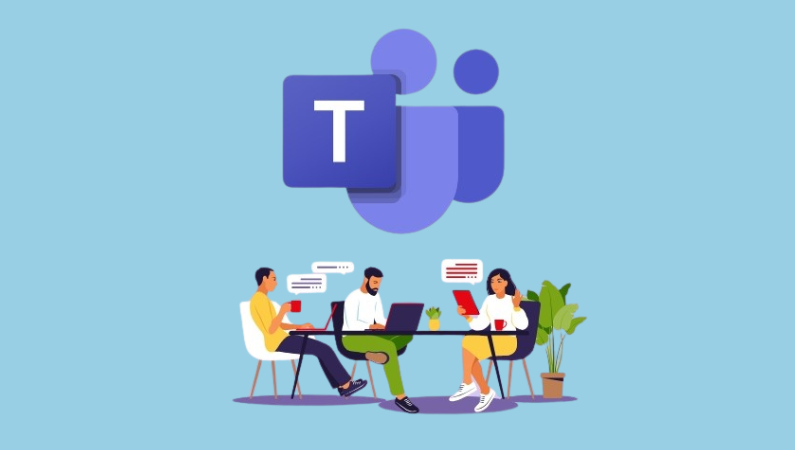Information Technology Services (ITS)
Voice calls through Microsoft Teams Phone: A large-scale University-wide transition
Published on: January 20, 2025
Last updated on: May 14, 2025
This transition aimed to unify communication, reduce costs and enhance the overall user experience.

“No small feat”: size and scale mean extensive work
The project’s core objective was to replace the university’s existing seven-year-old VoIP system. More than 400 departments and 10,000+ users were set to be impacted, with over 11,000 phone numbers scheduled for migration.
“The migration to Teams Phone was an ambitious project with a clear goal,” says Will Hu, Manager, Telecommunications at EIS. “For a university of this size and scale, such a transition is no small feat. But the decision was driven by several factors, including cost savings.”
By moving to Teams Phone, the University has reduced departmental telephony costs by approximately 25 per cent per phone line. The project is now successfully completed at the St. George and Mississauga campuses with work underway at the Scarborough campus for completion in late 2025.
Collaboration key to success among many moving parts
This large-scale undertaking relied on collaboration between several partners.
For the project to be successful, it required a functional billing program to calculate charges, send invoices, issue credits and more. José Manuel Lopez Lujan, Manager, Servers, Storage & Visualization and the EIS Private Cloud team created an efficient in-house billing program for internal charge recovery—and did so in a very short amount of time.
“With remarkable foresight and technical expertise, José designed a system that automates the entire billing process,” says Hu, commending the system for its “versatility and user-friendliness” and noting that it has “revolutionized our workflow.”
Lujan’s system has also inspired groups within and outside EIS to look at implementing similar billing systems because of its effectiveness and potential for broader application.
Another key aspect of the migration project was the creation and maintenance of SERVids—generic Teams accounts that are not tied to a specific person and can therefore be used in common areas like labs or reception desks.
And finally, the work of network engineering and implementation staff was key to designing the architecture of the VoIP network and to deploying the service.
Kevin Wong, Systems and Network Administrator at EIS, says a number of collaborative initiatives were undertaken, including working with vendors to validate the configuration of the networking equipment, composing a questionnaire to ascertain community needs and designing an IP address scheme and network address translation (NAT) environment. For those unfamiliar with NAT, it is essentially a workaround for the fact that the internet is running out of unassigned IP addresses—but service still needs to be provided for a growing number of customers.
“Probably the biggest challenge,” says Wong, “was to validate the information we gathered. EIS extends physical network connectivity up to the edge of a department or faculty where it then gets handed off to the customers’ own network infrastructure.”
“There were often situations where a department needed to upgrade their infrastructure—for example, networking switches or cabling—because what was in place was too old to meet the requirements for a modern VoIP deployment. This was sometimes a time-consuming process as often our technicians had to manually trace the physical connections of undocumented networks.”
“The Telecommunications team worked closely with Rogers Communications to design, implement and support the migration,” says Hu. “Executing this migration without disrupting university operations required technical expertise, meticulous planning and seamless collaboration between parties,” says Hu, “all of which we’re very proud to have achieved.”
Benefits: Streamlining communication and boosting efficiency
The shift to Microsoft Teams Phone was not just a cost-saving initiative. It also simplified the communication experience for users, who now only need Microsoft Teams for voice calls, eliminating the use of multiple “softphone”—software that makes phone calls—applications such as Broadsoft Communicator 7 or Cisco WebEx.
Furthermore, the project has eliminated the need for voicemail password resets. Voicemails are now sent directly to users’ U of T email address with an audio file attachment. Additionally, by reprogramming existing Polycom VoIP handsets—the physical machines used to place VoIP calls—to work with Teams Phone, the university has avoided purchasing new equipment and extended the lifespan of its hardware investments.
“This new system has not only improved operational efficiency but also created a more user-friendly experience,” says Hu. “Now, staff and faculty can focus on their work rather than managing complex telecommunications tools.”
“This project is a prime example of how strategic technology upgrades can generate significant cost savings while enhancing the user experience,” says Hu. “We’re very proud to be positioning U of T for a future where communication tools are streamlined, efficient and tailored to the evolving needs of higher education.”

